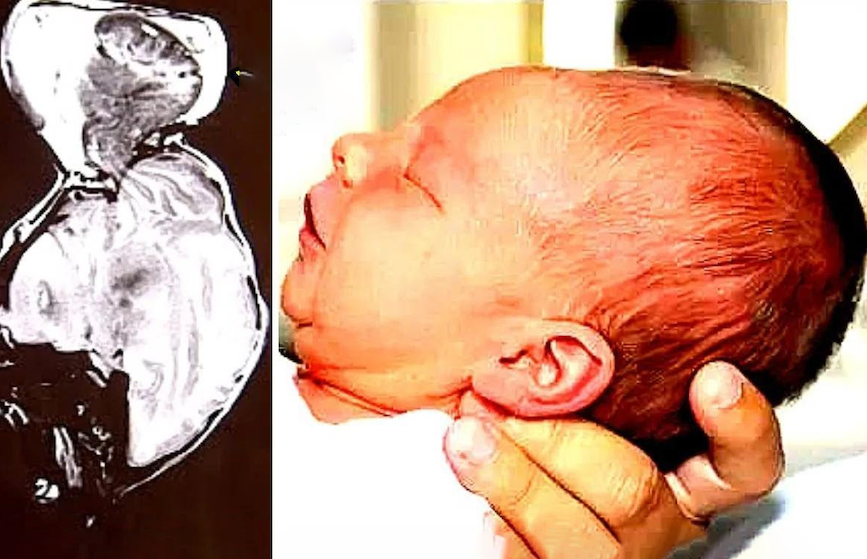Instead of just learning the gender of their baby like the pair had originally hoped, Siera and her husband Dustin were told that their baby boy had a rare disease and that there was no hope for survival. “They said there was no chance that he was going to live. We were never really given hope so we had actually decided to end the pregnancy. We got to the point of the night before the procedure to end it and I couldn’t do it. I just had it set in my head that he wasn’t going to turn out the way they thought he was”, the mother reportedly said.
Doctors didn’t have much hope for Bentley and predicted that he wouldn’t live long after he was born. His parents decided to go on with the pregnancy though even if it was just to say goodbye. Bentley was born with his brain outside his skull. Doctors said he didn’t have a chance, but he not only survived—he thrived. Now, some seven months later, Bentley has undergone reconstructive surgery to move his brain back into his skull. Bentley’s parents found out something was wrong when they went in for a routine ultrasound at 22 weeks. Still in the womb, he was diagnosed with a rare condition called encephalocele, or cranium bifidum, in which parts of the brain protrude outside of gaps that have formed in the developing skull.
The parents were told that their baby likely wouldn’t survive very long after birth, or that if he did he wouldn’t have any brain function; he was simply “incompatible with life.” Aside from the large sac containing critical parts of his brain atop his head, Bentley developed normally. He continued to grow, and cried when he was hungry. The doctors were incredulous, and insisted that the growth above his head was just damaged tissue, and that there’s no way it could be functioning, but Bentley’s behaviors and normal developmental trajectory suggested otherwise. When Bentley turned four months, Sierra and Dustin took him to a special hospital where a surgeon agreed that the infant was using his brain, but warned that it may not be possible to put it back in the cranium.
Using 3D-printed models, the surgeons planned out and practiced the pending procedure. Bentley had 100 cubic centimeters of brain outside his skull, so the surgeons had to expand his cranium to accommodate it. Before the surgery, Meara had the benefit of working with a plastic model, which he sliced-up, and then sent back to the lab to assess how much more brain matter his team could fit inside the skull. The surgery went well, though Bentley had to return for a pair of follow-up procedures to add a shunt and to drain excess fluid from his brain. Nearly a month after the surgery, Bentley appeared to be doing fine, but no one can be sure what his future holds. It’s quite possible that his vision is impaired, but it’s not clear to what degree. He also began physical therapy the following month.
Featured Image – Representative


